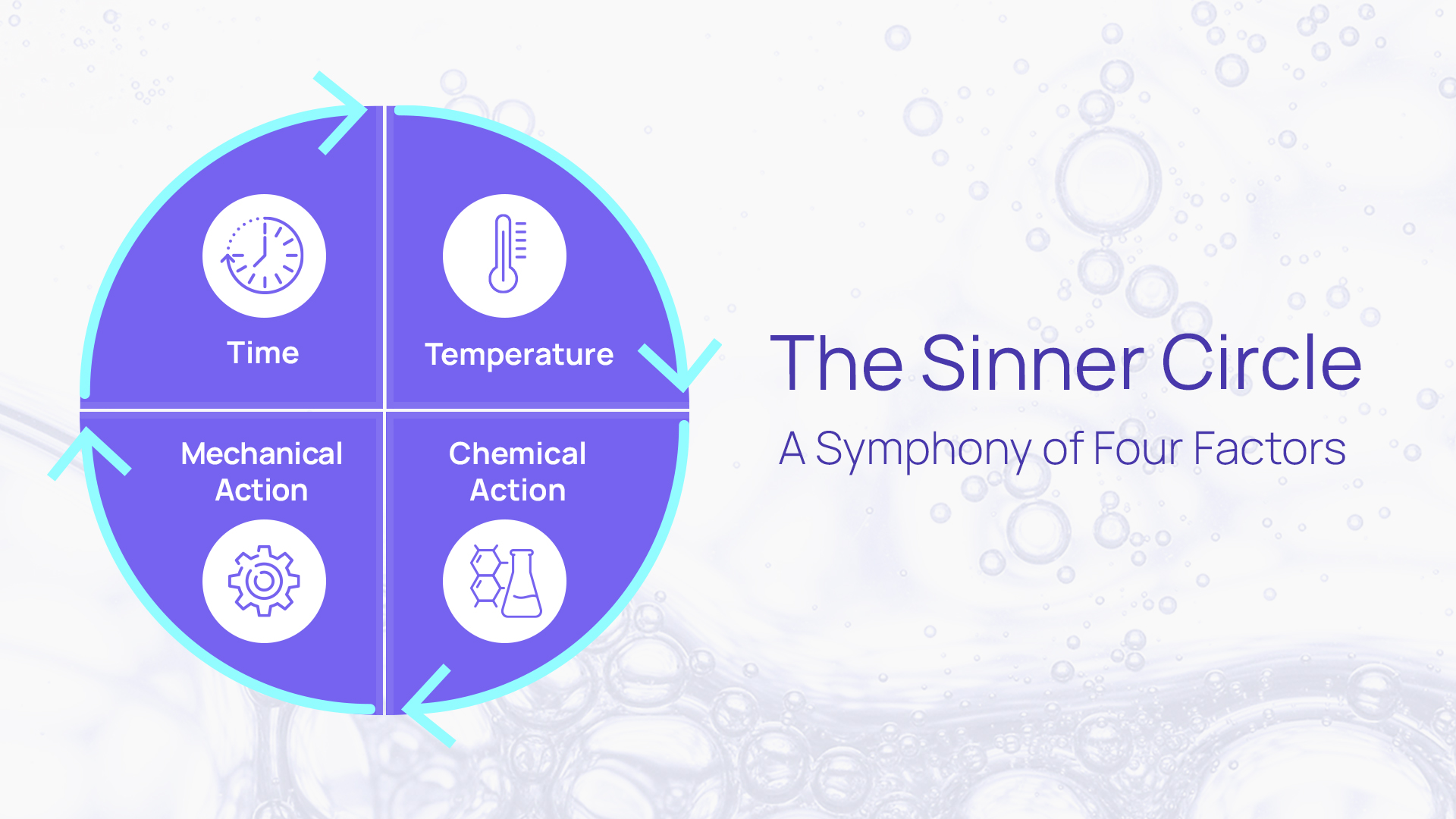In the annals of cleaning science, one name stands out as a pioneer whose contributions have stood the test of time — Dr. Herbert Sinner.

In 1959, this visionary German chemical engineer, then employed by Henkel, unveiled a groundbreaking illustration that not only revolutionized the cleaning industry but also laid the foundation for understanding the fundamental principles of effective cleaning.
Mechanical Action (M): Dr. Sinner’s emphasis on the significance of physical force in cleaning was revolutionary. From the meticulous scrubbing of surfaces to the dynamic agitation of cleaning solutions, the essence of mechanical action remains pivotal in dislodging and removing dirt. Dr. Sinner’s foresight laid the groundwork for modern mechanized cleaning technologies.
Chemical Action (C): The ‘C’ in the Sinner Circle, devoted to chemical action, recognized the transformative power of cleaning agents. Dr. Sinner’s vision encompassed the idea that specific chemical formulations could break down and dissolve contaminants. Today, the diversity and specificity of cleaning agents have expanded, but the central role of chemical action in effective cleaning endures.
Time (T): Acknowledging that cleaning is a process that requires time, Dr. Sinner introduced the temporal dimension to his circle. The meticulous consideration of duration, allowing for mechanical and chemical actions to unfold, remains an unchanging principle. In an era where efficiency is paramount, understanding the optimal time for cleaning processes is a testament to Dr. Sinner’s foresight.
Temperature (A): Temperature, the fourth factor in the Sinner Circle, underscores Dr. Sinner’s recognition that the effectiveness of both mechanical and chemical actions is influenced by the thermal environment. Higher temperatures enhance the activity of cleaning agents and increase the solubility of substances. As technology has advanced, the importance of temperature control in cleaning processes is more evident than ever.
The Balancing Act: Real-world Implications
Today, where environmental and cost concerns are front and centre it may necessitate a reduction in one or more of the above factors but where does this leave us. Any reduction, as dictated by Sinner’s principle, prompts an evaluation of all other actions. Are the current mechanical methods adequate? Is there a need for more advanced technology?
Similarly, in situations where time is a concern, a reduction in the cleaning timeframe demands a careful recalibration of mechanical, temperature and chemical factors. Can the mechanical processes be intensified without compromising linen life? Are there faster-acting, more potent cleaning agents available? What would a small change in temperature do?
This principle underscores that these factors are not independent variables but interconnected components of a dynamic system. Adjusting one factor inevitably influences the others. It’s a delicate balancing act where each element must be fine-tuned to maintain the equilibrium required for optimal cleaning efficiency.
Enduring Impact on Cleaning Practices
Dr. Herbert Sinner’s visionary work not only provided a comprehensive framework for understanding the cleaning process but also laid the groundwork for innovation in the cleaning industry. His Circle of Cleaning continues to serve as a guiding principle for researchers, engineers, and practitioners striving to develop efficient and sustainable cleaning solutions.
As we celebrate the enduring legacy of Dr. Sinner’s contributions, it is evident that his insights have transcended time, shaping the evolution of cleaning practices and ensuring that the fundamental principles he outlined in 1959 continue to be the bedrock of effective cleaning in the 21st century.
Author: Brad Carruthers, National Technical Manager
